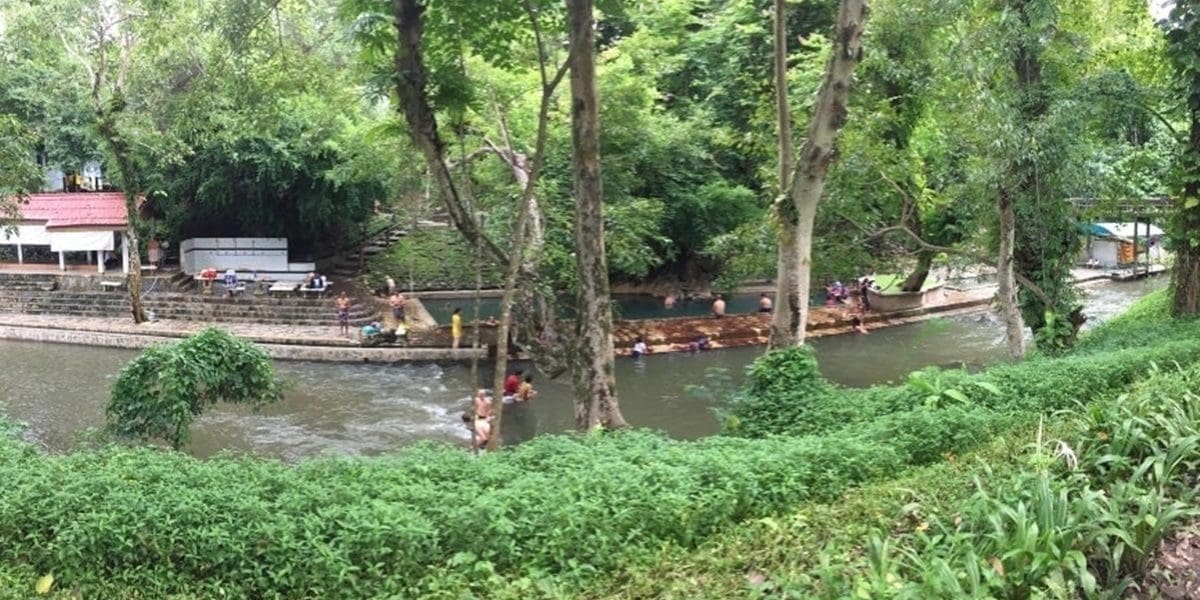Hin Dat Hot Spring, formerly known as Kui Mang Spring, was accidentally discovered in 1943 by Japanese soldiers who were supervising the construction of the infamous Death Railway during World War II. They had inadvertently found a natural hot spring with an underground stream that provides 45-55°C mineral water throughout the year.
The Hin Dat Hot Spring is nowadays a hugely popular tourist attraction in Kanchanaburi. It caters to Thai as well as foreigners who visit the place for a relaxing time soaking in warm water pools. There are three pools with different heat levels. Specifically, there is a highly hot spring, a medium temperature one, and a smaller one with a lower degree of heat for younger kids, as well as one explicitly reserved for monks. The Hindad Hot Spring is considered a natural health tourism destination. The belief is that it helps to treat a variety of diseases because of its natural hot mineral water.
Hin Dat Hot Spring is surrounded by nature, covered with shady trees, and sits adjacent to a cold water stream. The stream slowly flows parallel to the basins, coming down from the Pha Tat Waterfall in the Khuean Srinagarindra National Park, and provides you with easy access to refreshing cold water after the heat of the pools. For those who do not wish to play in the water and prefer to relax, you can always pamper yourself with a traditional body or foot massage.
Benefits
The local belief is that the mineral water in Hin Dat Hot Spring has healing properties, and can help to:
– Relieve bone pain, muscular aches, and rheumatism.
– Cure beriberi (vitamin B-1 deficiency), and gout.
– Help blood circulation and vascular extension, thus improving the body’s metabolism.
– Increase the ability of the capillaries to bring nutrients and oxygen to tissues while cleansing the waste.
– Enlarge pores and remove dirt from the skin, therefore brightening your complexion.
– Relax the body and mind, and help the build-up of your energy level while alleviating stress.


